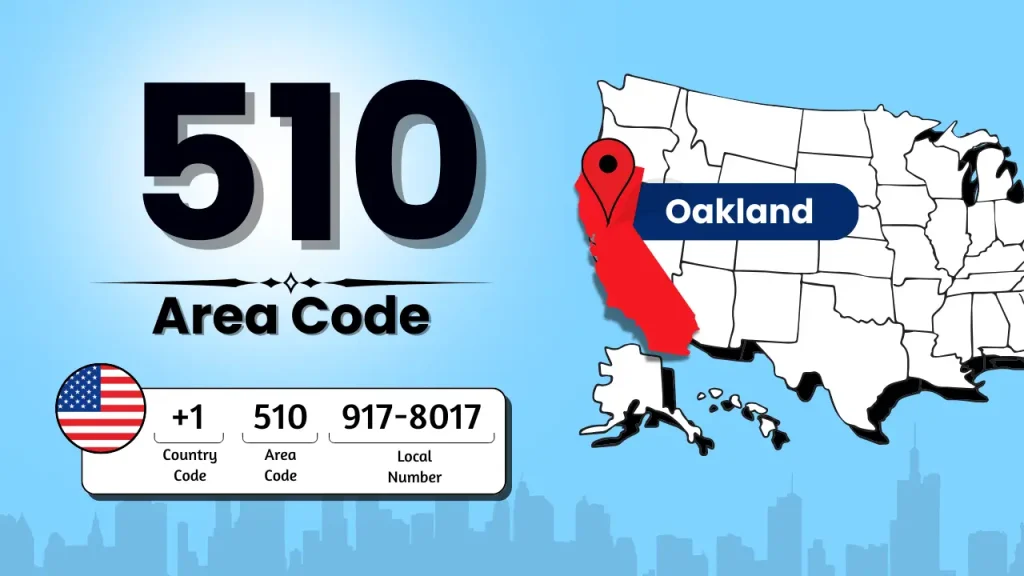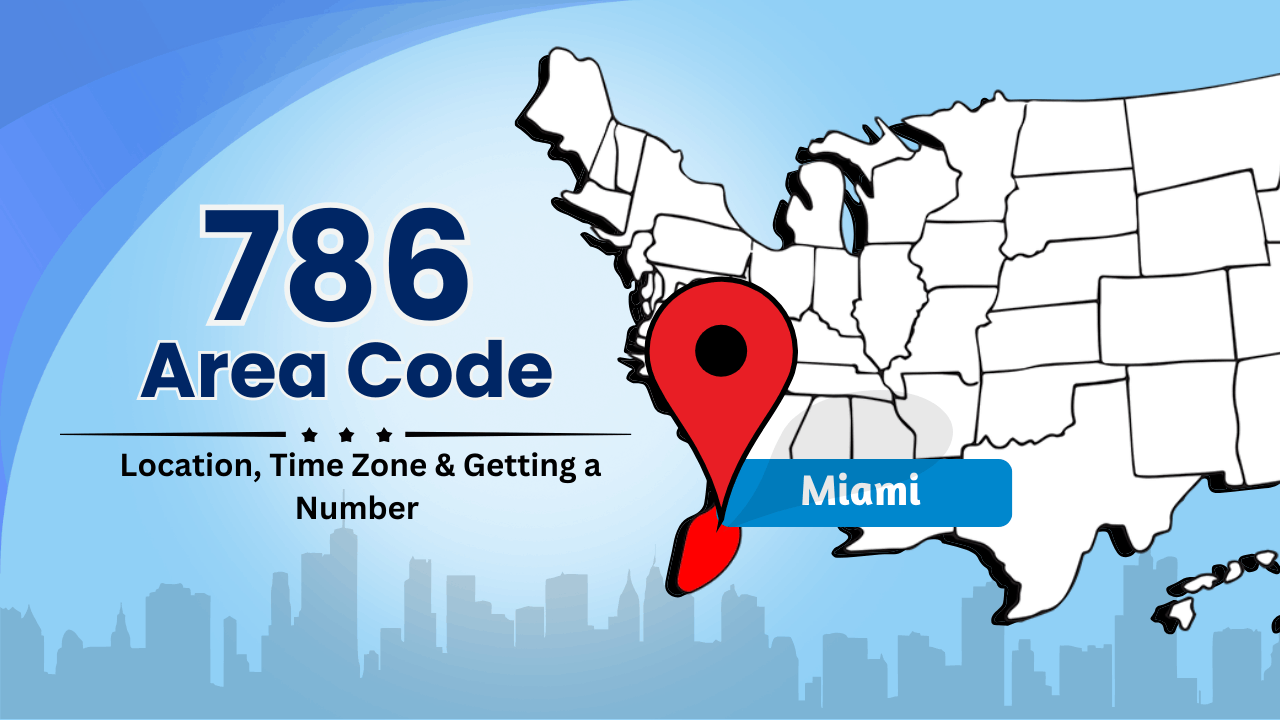Introduction
The 510 area code isn’t just a phone prefix; it’s a cultural touchstone, a symbol of the East Bay’s independent spirit, and a key to unlocking a region known for its innovation, diversity, and vibrant communities. From the bustling streets of Oakland to the academic heart of Berkeley, from the manufacturing hubs of Fremont to the waterfront views of Richmond, the 510 connects a tapestry of cities each with its own distinct character. This isn’t just about dialing a number; it’s about understanding a place. This guide is your complete resource for everything 510 area code. Key Takeaways- East Bay Identity: A 510 number instantly signals you’re part of the East Bay community, boosting credibility for businesses and connecting residents.
- Beyond the Basics: We go deep into the history, culture, and practicalities of the 510, not just the surface-level information.
- Scam Protection: Learn to identify and avoid common 510 area code-related scams, protecting your personal and financial information.
- Business Advantage: Discover how a 510 number can give your business a competitive edge in the local market.
- Dialing Made Easy: Clear, concise instructions for dialing within, to, and from the 510 area code.
- History and Split information Find out when the area code was established and the area code it was split from.
Geographic Coverage: The 510 Cities
The 510 area code primarily serves the western portions of Alameda and Contra Costa counties in California’s East Bay. Here’s a detailed breakdown: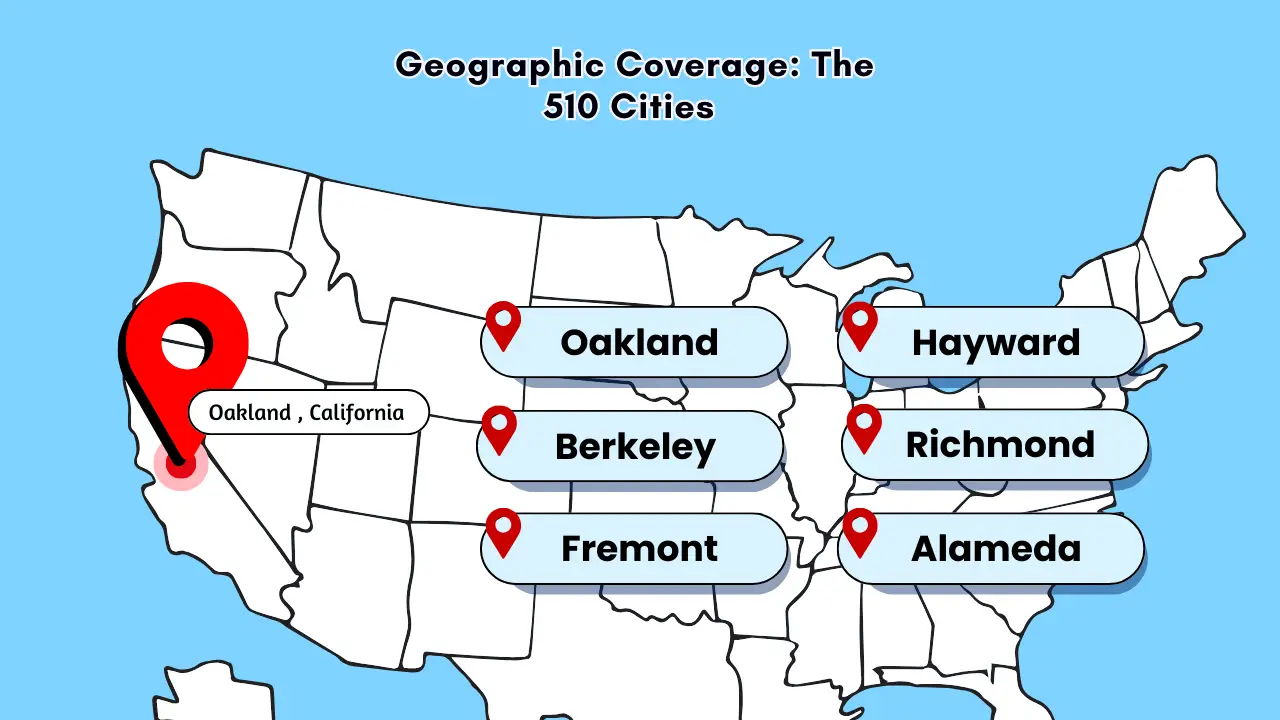
- Major Cities:
- Oakland: The largest city in the 510, known for its port, arts scene, and diverse neighborhoods.
- Berkeley: Home to the University of California, Berkeley, and a hub of intellectual and cultural activity.
- Fremont: A major center for technology and manufacturing, with a large and growing population.
- Hayward: A diverse city with a strong industrial base and a growing downtown.
- Richmond: A historic port city with a revitalizing waterfront and a rich industrial heritage.
- Alameda: An island city with a unique charm, known for its Victorian architecture and naval history.
- Smaller cities and unincorporated areas:
- Albany
- Emeryville
- Piedmont
- San Leandro
- San Pablo
- El Cerrito
- Hercules
- Pinole
- El Sobrante
- Kensington
- Rodeo
- Crockett
- Port Costa
- Important Distinction: The eastern parts of Alameda and Contra Costa counties (cities like Dublin, Pleasanton, Livermore, San Ramon, Danville, and Walnut Creek) are in the 925 area code. This is a crucial distinction for businesses targeting specific areas.
Phone Number Format and Dialing Rules
The 510 area code follows the standard North American Numbering Plan (NANP):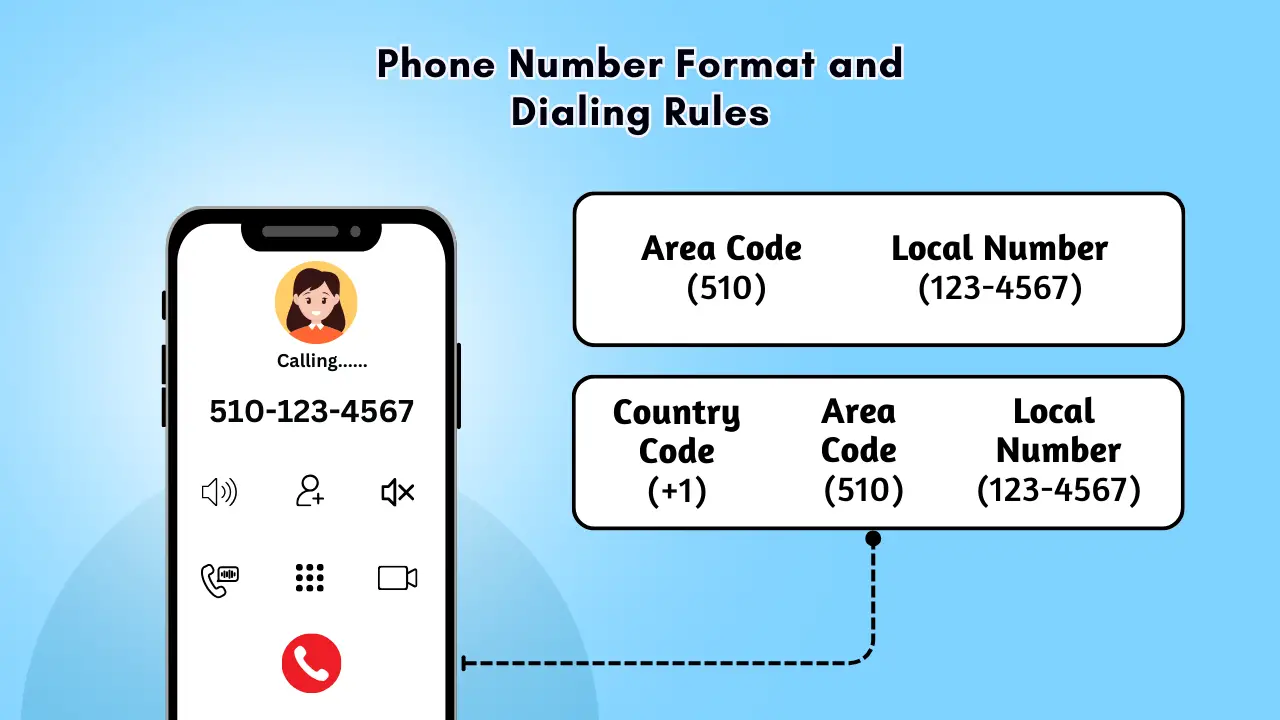
- Format: (510) XXX-XXXX
- 510: The area code.
- XXX: The prefix (or exchange code), specific to a smaller geographic area or provider within the 510 area code.
- XXXX: The unique line number.
- Dialing Rules (Simplified):
- Within the 510: You may be able to dial just the 7-digit number (XXX-XXXX). However, 10-digit dialing (510-XXX-XXXX) is increasingly becoming mandatory, and it’s best practice to always use it.
- From outside the 510: Always dial 1 + 510 + XXX-XXXX.
- To a different area code: Dial 1 + area code + XXX-XXXX.
- Toll-free numbers: Dial 1-800/888/877/etc. + XXX-XXXX.
Common Uses and Special Numbers
- Business: Essential for establishing a local presence and building customer trust.
- Residential: Connects families and individuals within the East Bay community.
- Government: Used by city, county, and state agencies to provide services to residents.
- Special Numbers:
- 911: Emergency services (police, fire, medical).
- 411: Directory assistance (though less common now with online search).
- 311: Non-emergency city services (in many 510 cities).
- 711: California Relay Service (for the hearing impaired).
- 511: Traffic and transportation information
- 211: Community Services and Referrals
- 811: Call Before You Dig
History of the 510 Area Code
The 510 area code has a surprisingly dynamic history, reflecting the growth and evolution of the East Bay:- Origin: The 510 area code was created in 1991 as a split from the 415 area code. The 415, one of the original area codes in California, had become exhausted due to the Bay Area’s rapid population and technological growth.
- The 1998 Split: Just seven years later, in 1998, the 510 area code itself was split to create the 925 area code, serving the eastern portions of Alameda and Contra Costa counties. This further highlights the explosive growth in the East Bay.
- Overlay Potential: While not currently in place, there have been discussions about a potential overlay for the area code 510 in the future, which would add another area code to the same geographic region. This is a common solution to area code exhaustion.
Benefits of a 510 Area Code
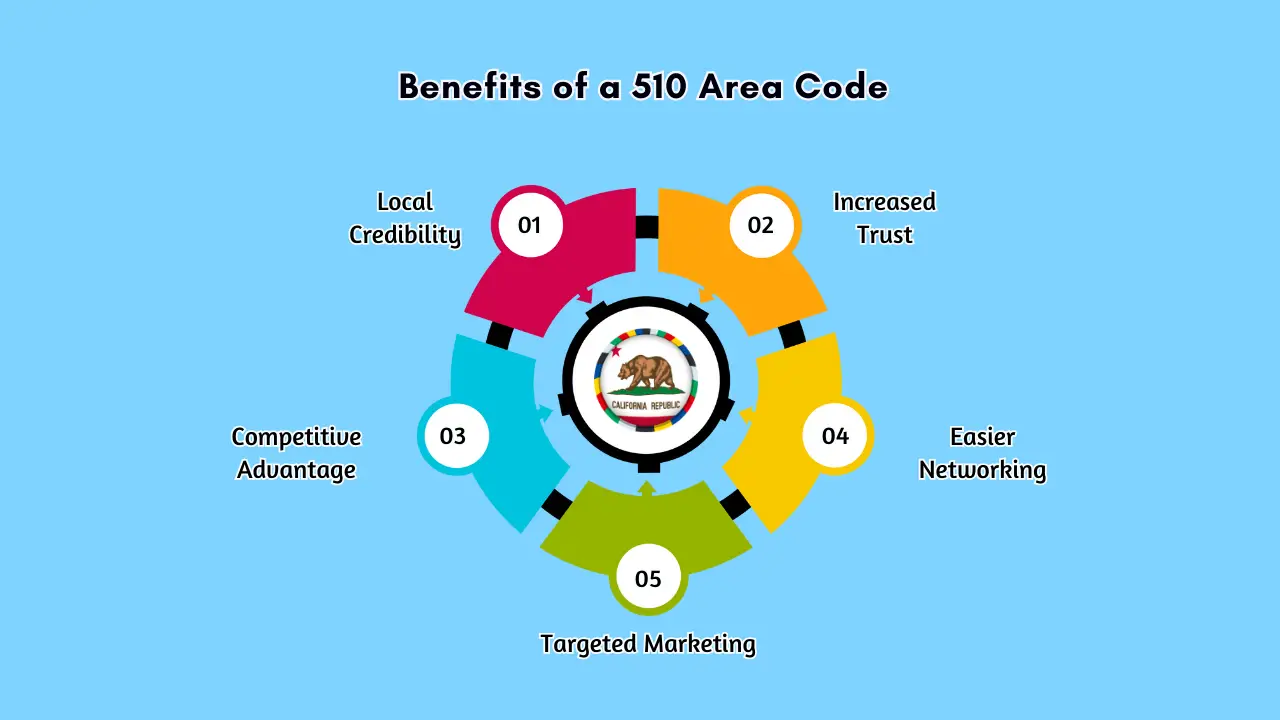
- For Businesses:
- Local Credibility: The most significant benefit. A 510 number instantly tells customers you’re an East Bay business.
- Targeted Marketing: Allows for precise geographic targeting of advertising campaigns.
- Increased Trust: Customers are more likely to trust and engage with a local business.
- Competitive Advantage: Differentiates you from businesses using out-of-area or generic numbers.
- Easier Networking: Facilitates connections with other local businesses and organizations.
- For Individuals:
- Community Connection: A strong symbol of belonging to the East Bay.
- Easier Local Access: Simplifies communication with local services, businesses, and government.
- Personal Branding: Reinforces your East Bay identity.
- Easier recall: Easier for local contacts to remember and recognize your number.
Choosing a Phone Service Provider in the 510 Area Code
Consider these factors:- Reliable Coverage: Ensure strong signal and service in your specific area of the 510.
- Competitive Pricing: Compare plans and features from different providers.
- Essential Features: Voicemail, call forwarding, caller ID, call waiting, etc.
- Excellent Customer Support: Choose a provider with responsive and helpful support.
- Business-Specific Needs: If for business, consider VoIP features like auto-attendants, call routing, and CRM integration.
510 Area Code Scams and Safety
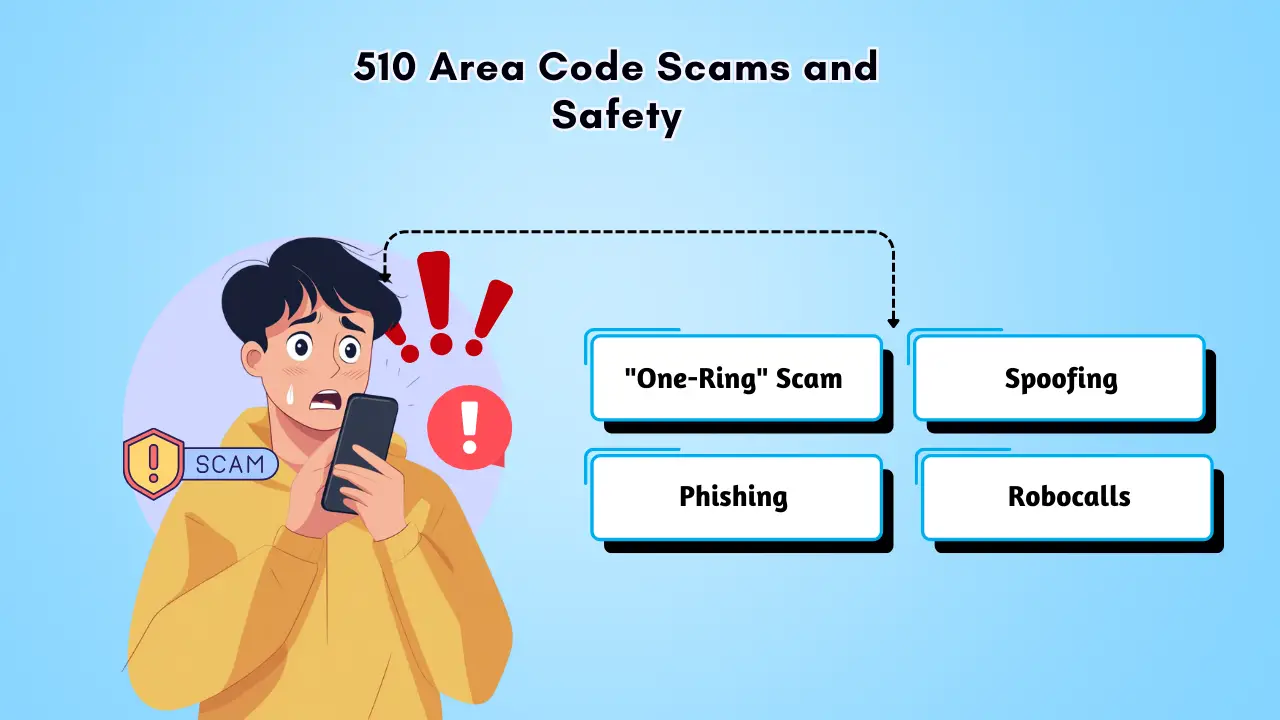
- Common Scams:
- “One-Ring” Scam: The scammer calls and hangs up after one ring, hoping you’ll call back (often to an international number with high charges).
- Spoofing: The caller ID displays a fake 510 number to appear local, even if they’re not.
- Phishing: Scammers impersonate banks, utilities, or government agencies to get your personal information.
- Robocalls: Automated calls offering fake services or prizes.
- Protection Strategies:
- Don’t answer unknown numbers: Let them go to voicemail.
- Never give out personal information over the phone unless you initiated the call and are certain of the recipient’s identity. 1
- Register with the National Do Not Call Registry: (donotcall) – While it won’t stop all scams, it reduces legitimate telemarketing calls.
- Report scams: Report scams To the FCC .
- Use call-blocking apps: Many apps (like Hiya, Nomorobo, Truecaller) can help identify and block spam calls.
- Be Skeptical: If an offer sounds too good to be true, it probably is.
The Area Code 510’s Economic and Cultural Impact

- Economic Engine: The Area Code 510 is a hub for:
- Technology: From established companies to burgeoning startups, especially in software, biotech, and clean tech.
- Manufacturing: A strong manufacturing base, including food processing, advanced materials, and more.
- Logistics: The Port of Oakland is a major international shipping hub.
- Healthcare: Leading hospitals and research institutions.
- Education: UC Berkeley is a major economic driver and source of innovation.
- Cultural Identity:
- Independent Spirit: The 510 represents the East Bay’s history of progressive politics, artistic expression, and counter-culture movements.
- Diversity: The 510 is home to a rich mix of cultures and communities.
- Music Scene: A vibrant music scene, from punk rock (Green Day, Rancid) to hip-hop (Too $hort, E-40, Hieroglyphics) and everything in between.
- Arts and Culture: Numerous art galleries, theaters, and performance venues.
- “The Town” vs. “The City”: Oakland (often referred to as “The Town”) has a distinct identity within the area code 510, separate from San Francisco (“The City”). This local pride is often associated with the 510 area.
Conclusion
The 510 area code is more than just a telephone prefix; it’s a symbol of the East Bay’s dynamism, resilience, and unique character. It’s a connection to a community that embraces innovation, celebrates diversity, and values its local identity. Whether you’re a long-time resident, a new business owner, or just curious about this vibrant region, understanding the 510 is key to understanding the East Bay itself.Frequently Asked Questions
The 510 area code primarily serves cities in Alameda and Contra Costa counties in California’s East Bay, including Oakland, Berkeley, Fremont, Hayward, Richmond, Alameda, and smaller cities such as Emeryville, San Leandro, and Piedmont.
Yes, a 510 area code is ideal for establishing a local business presence in the East Bay. It boosts credibility, helps target local customers effectively, and builds trust within the community.
For dialing within the 510 number, use the 7-digit phone number (XXX-XXXX), but 10-digit dialing (510-XXX-XXXX) is becoming the standard. To call from outside the area code, dial 1 + 510 + XXX-XXXX.
Yes, some common scams include the “one-ring” scam, where a call is made and immediately dropped, and spoofing, where scammers use a fake 510 number to appear local. Always be cautious and avoid answering unknown numbers.
The 510 area code was created in 1991 as a split from the 415 area code due to the growing demand for phone numbers. In 1998, the 925 area code was split off to serve eastern parts of the East Bay, further addressing population and business expansion.

